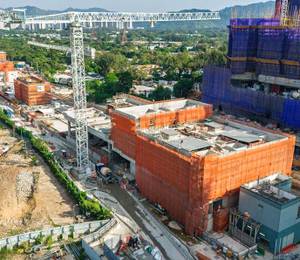The construction progress of the Jakarta-Bandung high-speed railway (HSR) has reached 73%, according to Indonesian President Joko ‘Jokowi’ Widodo during his inspection tour of the project last week.
In an announcement released by the Cabinet Secretariat of Indonesia, President Widodo mentioned that in 2022 the project will be ready to enter the preparation stage for operation. “It is projected that by the end of 2022, the Jakarta-Bandung high-speed train can move to a testing phase and will start operating soon after,” he said.
President Widodo visited the project site in Bekasi, West Java, on 18 May. The first point he went to was the casting yard #1 in Cikarang Utara District, Bekasi Regency, which is the location of one of the supporting facilities for the production and distribution of box girders used as a compiler for the track structure. Afterwards, he stopped by the tunnel #1 located at Km 5+500 Jakarta-Cikampek Toll Road.
Once operational, the new Jakarta-Bandung HSR is expected to be integrated with existing transport systems in the capital Jakarta, including the LRT (light rail transit) and MRT (mass rapid transit) lines.
President Widodo further emphasised the importance of benefitting from technology transfer through the construction of the Jakarta-Bandung HSR. This is to make sure that in the future “when the railway is extended to East Java province’s capital Surabaya, our human capital will be ready to lead the project using the experiences they have gained from the Jakarta-Bandung project,” he said.
With a total length of 142.3 km, the Jakarta-Bandung HSR has a maximum design speed of 350 km/hr. It is aimed to reduce the travel time between Jakarta and Bandung from more than three hours to around 40 minutes.
The project is owned and developed by PT Kereta Cepat Indonesia China (KCIC), a joint venture between a consortium of Indonesian state-owned enterprises (BUMN) and a consortium of Chinese railroad companies. There are currently four stations built along the line, namely Halim, Karawang, Walini and Tegalluar.
Photo: Cabinet Secretariat of Indonesia (© BPMI/Lukas)











